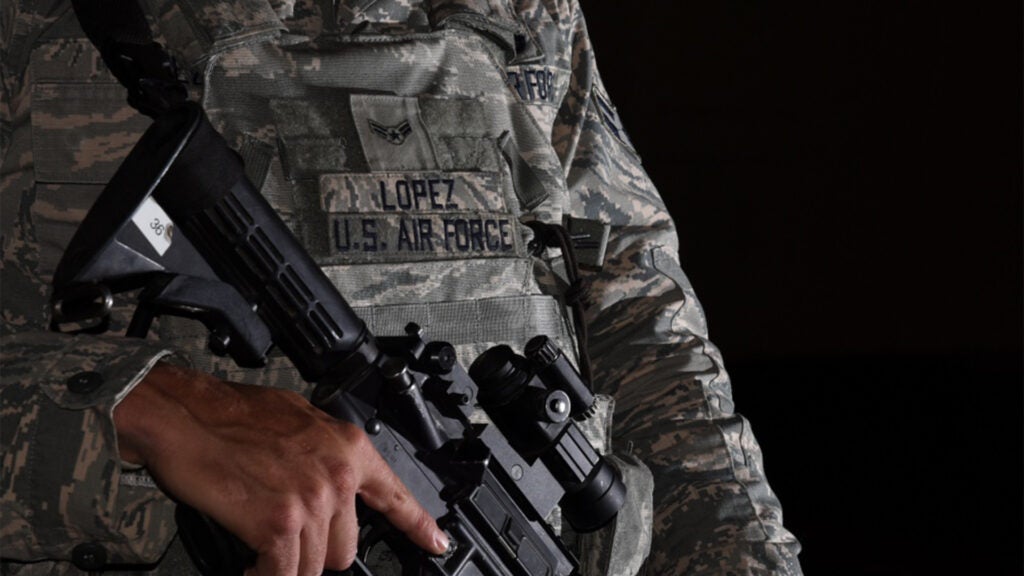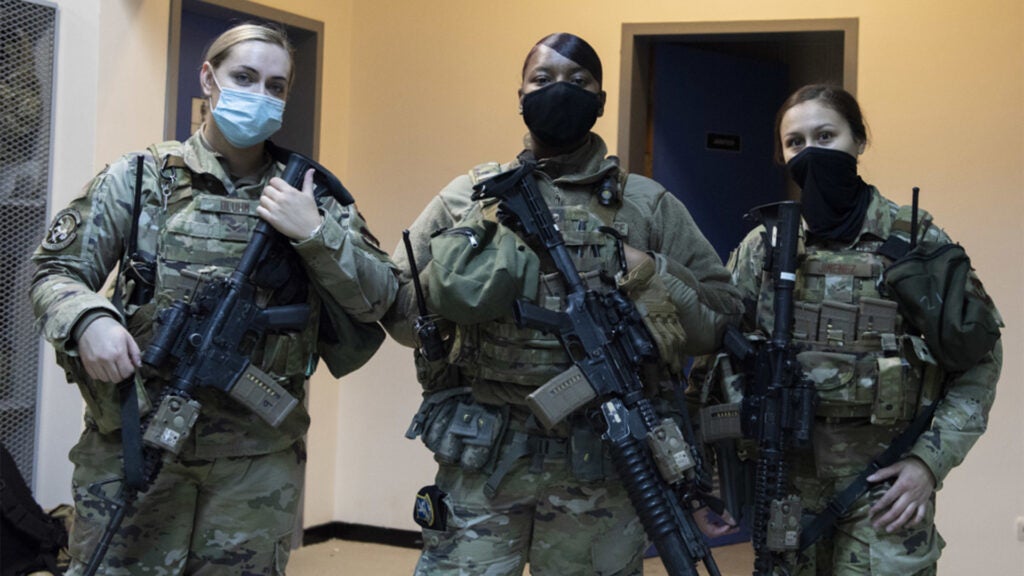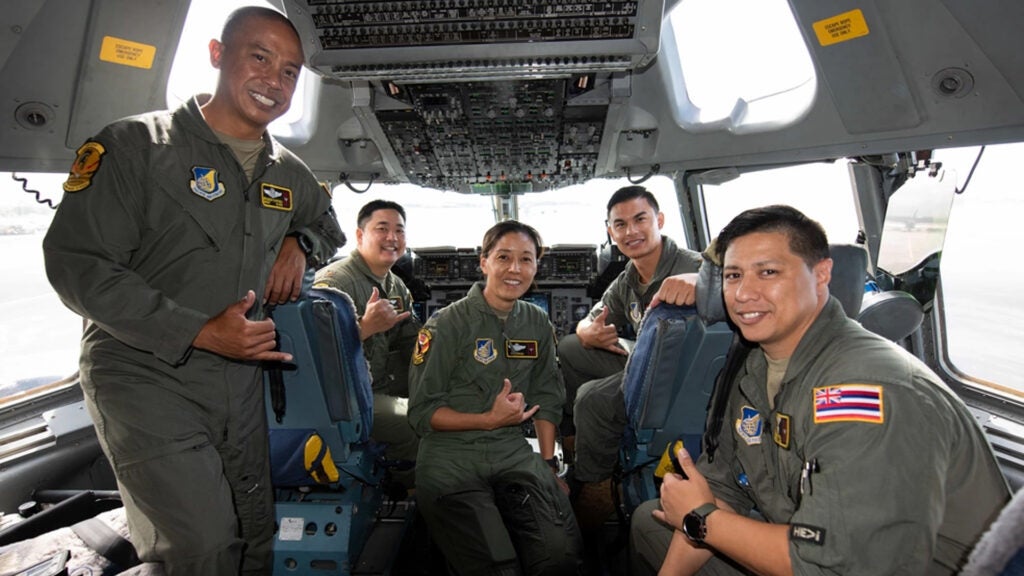Air Force finds one-third of female airmen have been sexually harassed
Anew report from the Air Force shows that one out of every three military women who responded to a survey said they experienced sexual harassment during their Air Force career, while one out of every four female civilians said they also experienced sexual harassment in the branch.
The numbers are one of dozens of startling statistics uncovered by the new report, which covers racial and gender disparities in the U.S. Air Force and Space Force at every point in members’ careers, such as accessions, promotions, disciplinary actions, leadership positions, and retention. Published on Tuesday, the report is an expansion of an initial disparity review the Air Force released in December 2020.
While that first report focused exclusively on disparities affecting Black airmen and guardians, Tuesday’s report studied those affecting Asian American, Native American, Pacific Islander, Hispanic/Latino and female airmen and guardians. The report is part of a larger effort within the Air Force to reconcile with racial inequalities across the service, which were first revealed in June 2020, after a stinging study by the advocacy group Protect Our Defenders found racial disparities in the Air Force military justice system.
The head of the Space Force, Gen. John “Jay” Raymond, emphasized that understanding these disparities helps make the branch more effective overall.
“We all come from different backgrounds, different cultures, and subscribe to a variety of different beliefs. It is these differences that make us a highly effective force,” he wrote in a press release on Thursday. “They underwrite our ability to be agile and innovative, to compete, deter and win. Inclusion is the action that draws the best from every one of our members, providing advantage for our nation as one, ready and successful team.”

Thursday’s report was the product of months of analysis involving military justice data going back to 2012; 17,000 single-spaced pages of feedback from 100,000 service members and civilians; 122 group discussions with airmen and guardians across the branch, and 21 past studies of race, ethnicity and gender in the military. The feedback in particular is part of a deliberate attempt to hear directly from service members, said Air Force Chief of Staff Gen. Charles “CQ” Brown Jr.
“We must continue to listen to our people, understand what they are experiencing, and receive their feedback as we take steps to improve,” he said in a statement on Thursday.
The 208-page report has enough information to fill a book, but some of the most illuminating findings are grouped by race and gender and listed below.
Gender
- Women make up 50% of the U.S. population that are eligible to serve, but from 2015 to 2020, only 21.7% of Air Force officers and 21% of enlisted members were women.
- The largest gender diverse career fields were in operations (i.e. aircrew, intelligence, special operations, battle management), where women made up only 13.8% of active-duty Air Force operations and only 7.7% of active-duty Air Force pilots. These tend to be the career fields with the fastest pace of career advancement, the report wrote.
- Women make up 24% of active-duty Air Force company grade officers, 18% of field grade officers, and only 8% of general officers.
- 45% of female respondents said they had to work harder than their male peers to prove they were competent at their job.
- “About half of female respondents said maintaining work/life balance and taking care of family commitments adversely impact female airmen and guardians more than male airmen and guardians, while only 18% of males shared this perception,” the study said.
- The sentiment that work/life balance and family commitments impact women more than men was shared by 70% of female officers and 29% of male officers; 70%/50% for female and male general officers; and 64%/21% for female and male E-9s.
- Female officers and civilians were 38% more likely than male officers and civilians to leave the Air Force after five to 10 years of service.
“A significant theme from female respondents was maternal bias – leadership and supervisors assumed females with children would not be interested in or available for deployments, TDYs, training, or high-demanding jobs due to their family obligations,” the report wrote.
The report also noted a perception of a double-standards in regards to taking care of family obligations.
“For example, if a woman misses work to care for a child, her dedication to the mission is questioned,” it wrote. “If a man misses work to care for a child, he is seen as an outstanding father.”

Race
The Air Force cautioned that some racial and ethnic minorities make up extremely small portions of the branch population overall, which makes identifying disparities a challenge. For example, the American Indian, Native Alaskan and Native Hawaiian or Other Pacific Islander racial groups combined account for less than 1.5% of the branch, the service wrote. Still, the report found some significant disparities, such as the following:
- Native American service members were 108% more likely to have received an Article 15 and 113% more likely to have faced courts-martial than their White peers.
- Asian American and Hispanic/Latino enlisted members were 31% and 33% less likely to have been subject to military discipline in the form of an Article 15 or courts-martial.
- Native American and Hispanic/Latino members were 33% more likely to have been the subject of an Office of Special Investigations (OSI) criminal case than White peers. These two groups were also more likely to have been given citations by Security Forces.
- Like with women, the operational career fields were the least diverse in terms of race and ethnicity. The active-duty pilot corps is 83.6% white, 3% Hispanic Latino, 2.7% Asian American, 2% Black, 0.5% Native American, 0.3% Pacific Islander.
- Asian Americans joined the Air Force at a rate 50% below the percentage of Asian Americans eligible to serve, while Native Americans were at 30% below.
- Asian Americans were the least likely among racial-ethnic groups to hold leadership positions. Enlisted members were 153% less likely to hold leadership positions, 65% less likely to become squadron/group commanders, and 280% less likely to become wing commanders when compared to White peers.
- 43% of racial and ethnic minority members said they had to conform to behave more like non-minority members to be successful in the Air Force.
- 41% of racial and ethnic minority group respondents said they had to work harder than their White peers to prove they were competent at their job.
- “Asian Americans reported an increase of ‘Chinese threat bias,’ which they felt negatively impacted their security clearances, and expressed concern regarding ‘COVID hate’ incidents on and off base,” the Air Force wrote.
- American Indians and Alaskan Natives “cited American Indian members being called ‘Pocahontas,’ staff meetings called ‘Pow Wows,’ and members who have no cultural affiliation with American Indian culture dressing up like an ‘Indian’ during celebrations and imitating war cries,” the report said.
- Even non-minority airmen and guardians said minority members were “less likely to be given the chance to fail and redeem themselves,” the report said.

The Air Force emphasized that this report was only the start of the service’s efforts to deal with the disparities found among women and minority members. Like with the first report dealing with disparities with Black airmen and guardians, this one left it to senior leaders to address the disparities observed in their individual commands. In six months, The Air Force Inspector General, which produced all of these reports, will assess those commands to see how the response is going.
On Thursday, the Air Force also published its first six-month assessment of actions taken in response to the December 2020 report on disparities with Black airmen and guardians. The Air Force Inspector General, Lt. Gen. Sami Said, summarized by saying it will be some time before the changes implemented six months ago begin to have an effect.
“We stopped the clock on 1 July, so to expect meaningful results in six months is a bridge too far,” he told reporters in a press call on Thursday. “These things are complicated. Are the experiences of airmen and guardians changing? I don’t expect to see that in six months, but we’ll be able to measure results a year from now.”
No comments